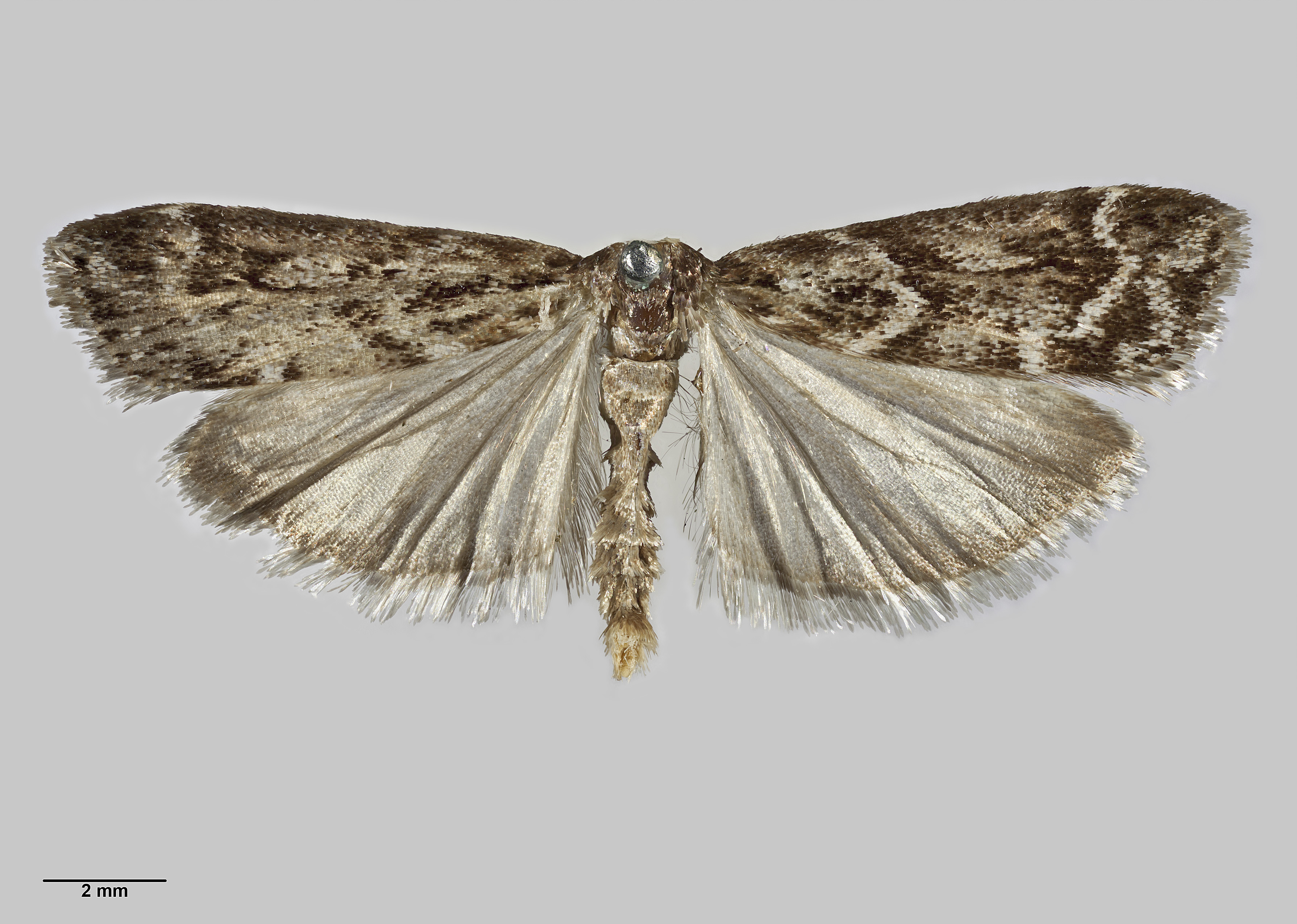Scoparia Illota on:
[Wikipedia]
[Google]
[Amazon]
''Scoparia illota'' is a species of
 The
The
moth
Moths are a paraphyletic group of insects that includes all members of the order Lepidoptera that are not butterflies, with moths making up the vast majority of the order. There are thought to be approximately 160,000 species of moth, many of w ...
in the family Crambidae. It is endemic
Endemism is the state of a species being found in a single defined geographic location, such as an island, state, nation, country or other defined zone; organisms that are indigenous to a place are not endemic to it if they are also found elsew ...
to New Zealand
New Zealand ( mi, Aotearoa ) is an island country in the southwestern Pacific Ocean. It consists of two main landmasses—the North Island () and the South Island ()—and over 700 smaller islands. It is the sixth-largest island count ...
. The larvae of this species are leaf miner
A leaf miner is any one of numerous species of insects in which the larval stage lives in, and eats, the leaf tissue of plants. The vast majority of leaf-mining insects are moths (Lepidoptera), sawflies (Symphyta, the mother clade of wasps), ...
s.
Taxonomy
It was described byAlfred Philpott
Alfred Philpott (15 December 1870 – 24 July 1930) was a New Zealand museum curator, entomologist and writer. He was born in Tysoe, Warwickshire
Warwickshire (; abbreviated Warks) is a county in the West Midlands region of England. The ...
in 1919 using specimens collected at Cromarty in Preservation Inlet
Rakituma / Preservation Inlet is the southernmost fiord in Fiordland National Park and lies on the southwest corner of the South Island of New Zealand. With an area of , it is the fourth largest fiord in New Zealand, after Tamatea / Dusky Sound, ...
as well as specimen collected between Blue Cliffs Beach and the Knife and Steel harbour in Southland. The species was discussed and illustrated by George Hudson in his 1928 book ''The butterflies and moths of New Zealand''.'''' However the placement of this species within the genus ''Scoparia'' is in doubt. As a result, this species has also been referred to as ''Scoparia'' (s.l.) ''illota''. The holotype
A holotype is a single physical example (or illustration) of an organism, known to have been used when the species (or lower-ranked taxon) was formally described. It is either the single such physical example (or illustration) or one of several ...
specimen is held at the Auckland War Memorial Museum.
Description
 The
The wingspan
The wingspan (or just span) of a bird or an airplane is the distance from one wingtip to the other wingtip. For example, the Boeing 777–200 has a wingspan of , and a wandering albatross (''Diomedea exulans'') caught in 1965 had a wingspan of ...
is 18–20 mm. The forewings are blackish-fuscous, irrorated with white. Both the first and second line are white. The hindwings are grey. Adults have been recorded on wing in December. As a result of further study of the male genitalia, it has been argued that this species should be placed in the genus ''Eudonia''. Based on this as well as the wing pattern, it has also be postulated that ''S. illota'' belongs to the same species as '' Eudonia pachyerga.''
Distribution
This species is endemic to New Zealand. It is found in the forests of southern New Zealand. It is locally common in Thomsons Bush inInvercargill
Invercargill ( , mi, Waihōpai is the southernmost and westernmost city in New Zealand, and one of the southernmost cities in the world. It is the commercial centre of the Southland region. The city lies in the heart of the wide expanse of t ...
as well on the Cascade Road in South Westland.
Life stages
This species' larvae areleaf miner
A leaf miner is any one of numerous species of insects in which the larval stage lives in, and eats, the leaf tissue of plants. The vast majority of leaf-mining insects are moths (Lepidoptera), sawflies (Symphyta, the mother clade of wasps), ...
s. They form silk tunnels amongst the leaves of their host plants.
Host species
'' Pyrrosia eleagnifolia'' is a host species for the larvae of this moth.References
{{Taxonbar, from=Q14324367 Moths described in 1919 Moths of New Zealand Scorparia Endemic fauna of New Zealand Endemic moths of New Zealand